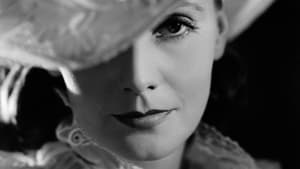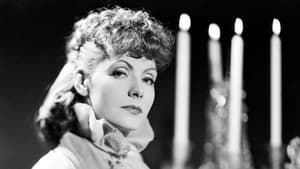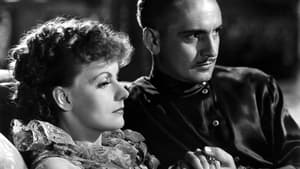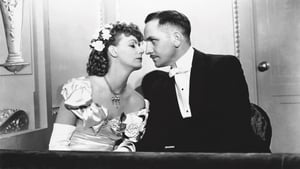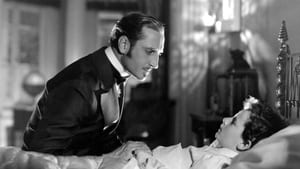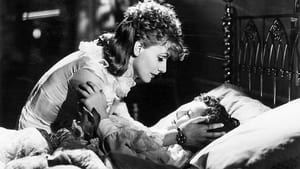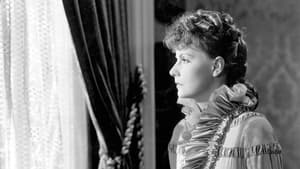Contact: info@alwanfilm.com
Video Sources 0 Views
- Watch trailer
- Anna Karenina 1935 Colorized
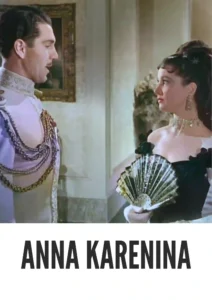
Synopsis
Table of Contents
ToggleAnna Karenina 1935 Colorized Review: A Classic Tale of Love and Tragedy Brought to Life

Introduction
Few stories have captured the complexities of love, betrayal, and societal pressures quite like Leo Tolstoy’s Anna Karenina. The 1935 film adaptation of this literary classic, directed by Clarence Brown, is a standout piece in early Hollywood cinema, showcasing the opulence and despair of 19th-century Russian aristocracy. Starring the legendary Greta Garbo as the tragic heroine, the film has remained a benchmark in literary adaptations for its stunning performances and lush production design. This article will delve into the film’s enduring significance, exploring the impact of its early colored versions, the intricacies of its storytelling, and the ways in which it reshaped the cinematic landscape.
Check The Full Colorized Movies List
Check Our Colorized Movies Trailer Channel
Understanding Anna Karenina 1935 Colorized: Director, Cast, and Genre
Director’s Vision for Anna Karenina (1935)
Clarence Brown, the director of Anna Karenina (1935), was a master of dramatic storytelling, known for his ability to elicit powerful performances from his actors. His approach to the film was deeply rooted in a desire to stay faithful to Tolstoy’s original novel while emphasizing the visual grandeur that Hollywood could bring to the story. Brown’s direction captures the emotional depth of the characters, particularly Anna’s inner turmoil as she navigates the restrictive society that condemns her passionate choices.
Brown’s vision for the film was one of elegance and tragedy, a perfect reflection of Tolstoy’s critique of the aristocratic society of his time. The film’s use of lush set designs, elaborate costumes, and atmospheric lighting underscored the duality of Anna’s world—one filled with beauty and privilege but also with stifling expectations and inevitable doom.
The Iconic Performance of Actors
The heart of Anna Karenina (1935) is undoubtedly Greta Garbo, whose portrayal of the titular character remains one of the most iconic in cinema history. Garbo’s Anna is a complex blend of vulnerability, defiance, and passion. She perfectly embodies Anna’s descent from respected socialite to disgraced lover, capturing the emotional rollercoaster of a woman torn between her duties and her desires. Garbo’s performance earned her widespread acclaim, solidifying her status as one of Hollywood’s greatest actresses.
Fredric March plays Count Vronsky, Anna’s dashing but morally conflicted lover. March’s portrayal of Vronsky is nuanced; he is both captivating and deeply flawed, representing the reckless passion that ultimately leads to Anna’s downfall. Basil Rathbone, as the stern and unforgiving Alexei Karenin, completes the love triangle, bringing a cold yet sympathetic edge to the character.
Exploring the Genre
Anna Karenina (1935) falls under the romantic drama genre, with heavy elements of tragedy. It captures the essence of Tolstoy’s novel—a tale of forbidden love, societal judgment, and personal downfall—through the lens of Hollywood’s Golden Age. The film emphasizes the emotional and psychological struggles of its characters, delving into themes of infidelity, family loyalty, and the consequences of living outside societal norms. This focus on inner conflict and moral dilemmas sets it apart as a timeless work of dramatic cinema.
Exploring the World of Anna Karenina 1935 Colorized: Plot and Characters
Detailed Synopsis of the Storyline
Set against the backdrop of Imperial Russia, Anna Karenina (1935) follows the tragic story of Anna, a beautiful but unhappy woman trapped in a loveless marriage to the austere government official Alexei Karenin. Anna’s life takes a dramatic turn when she meets Count Vronsky, a handsome cavalry officer. Despite being married, Anna is drawn to Vronsky, and the two embark on a scandalous affair that shatters the lives of everyone around them.
The film masterfully captures the escalating tension as Anna’s affair becomes public. She faces ostracism from the very society that once revered her, and her relationship with Vronsky begins to unravel under the pressure of societal scorn and personal guilt. As Anna becomes increasingly isolated, her mental state deteriorates, leading to her tragic end.
Supporting characters, such as Anna’s brother Stiva and his wife Dolly, add layers to the narrative, providing a stark contrast between conventional familial roles and Anna’s defiance of societal norms. The dynamic between these characters highlights the film’s central themes of fidelity, honor, and the costs of personal freedom.
The Art of Film Colorization
Understanding the Process of Film Colorization
Film colorization is the technique of adding color to black-and-white films, allowing new audiences to experience these classics in a different light. This process involves meticulously adding hues to each frame, often relying on historical references to maintain accuracy and authenticity. Early colorization was done by hand, a painstaking process that has since been revolutionized by digital technology, making it more efficient and visually appealing.
The colorization of Anna Karenina (1935) aimed to enhance the film’s already rich visual narrative. The challenge lay in balancing the film’s original tone with the vibrant palettes that colorization could provide. The goal was to preserve the atmospheric moodiness of the original while adding a new layer of visual storytelling.
Development Over Time
From hand-painted frames to modern digital techniques, colorization has come a long way. In the early years, colorization was seen as an innovative way to rejuvenate old films, but it also sparked controversy over whether it altered the filmmakers’ original artistic intentions. Today’s advanced technologies allow for greater accuracy in matching period-appropriate colors, breathing new life into classic films while honoring their legacy.
Early Colored Films: A Brief History
Emergence of Early Colored Techniques in Cinema
The journey towards full-color cinema began in the early 1900s with rudimentary methods like tinting and toning, which added single colors to entire scenes. As technology progressed, techniques like the two-color Technicolor process allowed for more dynamic and realistic colors, although the palette was still limited compared to today’s standards.
Technicolor eventually dominated the industry, becoming synonymous with Hollywood’s Golden Age films. This innovation marked a turning point in how stories were told on screen, transforming the cinematic experience and setting the stage for future developments in film colorization.
Anna Karenina 1935 and Its Early Colored Version
The Decision to Release in a Colorized Format
The decision to colorize Anna Karenina (1935) reflects a broader trend of reimagining classic films for modern audiences. The aim was not only to make the film more visually appealing but also to enhance its storytelling by bringing a new vibrancy to the opulent world of Imperial Russia. The colorized version allows viewers to experience the lavish costumes, grand sets, and intense emotional moments in a way that the original black-and-white film could not fully capture.
Impact on the Visual Narrative
The colorization of Anna Karenina (1935) adds depth and texture to the film’s visual narrative, drawing viewers further into the world of Anna’s conflicted heart and tumultuous life. The rich reds, deep blues, and muted earth tones of the costumes and settings underscore the film’s emotional weight, highlighting the stark contrasts between Anna’s passionate affair and her bleak reality.
While some purists argue that the black-and-white version better captures the novel’s underlying themes of despair and societal pressure, the colorized version offers a fresh perspective that enhances the film’s drama and opulence.
The Debate Over Film Colorization
Controversy Surrounding the Colorization of Classic Films
Film colorization has long been a divisive issue among cinephiles and industry professionals. Critics argue that colorizing films can dilute their original artistic intent, as directors and cinematographers designed their works to utilize the unique qualities of black and white. They contend that colorization can disrupt the visual language of a film, changing the mood and emotional resonance of scenes.
Supporters of colorization, however, believe it can revitalize classic films, making them more accessible to younger audiences who might shy away from black-and-white cinema. For many, colorization is seen as a bridge between past and present, allowing classic stories to be appreciated in new and vibrant ways.
Examining Anna Karenina 1935 as an Early Colored Film
How Colorization Enhances or Detracts from the Viewing Experience
For Anna Karenina (1935), the colorization process both enhances and complicates the viewing experience. The added colors bring a lushness to the film that underscores the decadence of the Russian aristocracy, highlighting the visual contrasts between the opulence of Anna’s world and the darkness of her personal despair.
However, some may argue that the original black-and-white format more effectively captures the novel’s themes of isolation and societal constraint. The stark contrasts of black and white mirror Anna’s emotional turmoil, making her descent into despair even more palpable. Ultimately, whether colorization enhances or detracts from the film depends on individual viewer preferences.
Influence and Legacy: Anna Karenina 1935 Colorized’s Impact on Cinema
A Benchmark for Literary Adaptations
Anna Karenina (1935) set a high standard for future literary adaptations, showcasing how complex, character-driven narratives could be successfully translated to the screen. The film’s influence extends beyond its immediate success, as it became a template for how filmmakers could tackle intricate novels while maintaining their emotional and thematic core.
The 1935 adaptation influenced subsequent versions of Anna Karenina, as well as other adaptations of classic literature. Its success demonstrated the power of faithful adaptation coupled with strong performances, lush production values, and a clear directorial vision.
Director’s Cinematic Legacy: Beyond Anna Karenina 1935 Colorized
Clarence Brown’s Influence on Filmmaking
Clarence Brown’s career spanned several decades, and his contributions to cinema went far beyond Anna Karenina (1935). Known for his work with Greta Garbo, Brown was a master at directing films that combined emotional depth with visual splendor. His ability to draw out nuanced performances from actors helped shape the melodrama and romantic drama genres, leaving a lasting mark on Hollywood.
Brown’s work on Anna Karenina (1935) exemplifies his commitment to storytelling and character, ensuring that the film remains a vital part of his directorial legacy.
Themes Explored in Anna Karenina 1935 Colorized
Examining the Themes of Darkness, Passion, and Social Constraint
At its core, Anna Karenina (1935) is a study of passion and the consequences of defying social norms. The film explores the dark undercurrents of love, betrayal, and societal judgment, highlighting how personal choices can lead to public condemnation and personal ruin.
Themes of loyalty, sacrifice, and the suffocating nature of societal expectations are central to the narrative, making the story as relevant today as it was in Tolstoy’s time. Anna’s plight is emblematic of the struggles faced by women who dared to step outside the boundaries of acceptable behavior, making her a tragic figure whose story resonates across generations.
Reception and Controversy Surrounding Anna Karenina 1935 Colorized
Initial Reviews and Audience Reactions
Anna Karenina (1935) was met with critical acclaim upon release, with many praising Garbo’s performance as a defining portrayal of the literary heroine. Audiences were captivated by the film’s emotional intensity and the lavish depiction of Imperial Russia, which brought Tolstoy’s world to life in vivid detail.
However, the colorized version of the film sparked debate among critics and viewers. While some appreciated the new visual experience, others felt it detracted from the film’s original tone and narrative subtlety. The controversy highlights the ongoing debate about the value and impact of film colorization on classic cinema.
Where to Watch Anna Karenina 1935 Colorized Online
Anna Karenina (1935) can be found on several streaming platforms, including Amazon Prime Video, Criterion Channel, and Turner Classic Movies. Both the original black-and-white and the colorized versions are available, allowing viewers to choose their preferred viewing experience. DVD and Blu-ray editions, including special releases with both versions, are also widely accessible for classic film collectors.
FAQs About Anna Karenina 1935 Colorized
Q: Who starred in the 1935 adaptation of Anna Karenina?
A: Greta Garbo stars as Anna Karenina, with Fredric March as Count Vronsky and Basil Rathbone as Alexei Karenin.
Q: Why was Anna Karenina (1935) colorized?
A: The film was colorized to appeal to contemporary audiences, offering a fresh visual experience and revitalizing interest in this classic adaptation.
Q: How does the film differ from Tolstoy’s novel?
A: While the film remains largely faithful to the novel’s plot, it condenses some of the secondary storylines and focuses more intensely on Anna’s personal journey and romantic entanglements.
Q: What makes Anna Karenina (1935) significant in film history?
A: The film is notable for its stunning performances, particularly Garbo’s, and its impact on literary adaptations in cinema. It remains a benchmark for storytelling, character development, and visual style.
Conclusion
Anna Karenina (1935) stands as a monumental achievement in classic cinema, capturing the grandeur and tragedy of Tolstoy’s timeless tale. Clarence Brown’s direction, combined with Greta Garbo’s unforgettable performance, brings a depth and authenticity to the story that continues to resonate with audiences today. The ongoing debate about the film’s colorized version reflects broader conversations about the preservation and modernization of classic films. Whether viewed in its original black-and-white or the vivid hues of the colorized edition, Anna Karenina (1935) remains a masterclass in adaptation, showcasing the enduring power of cinema to bring literature to life.
